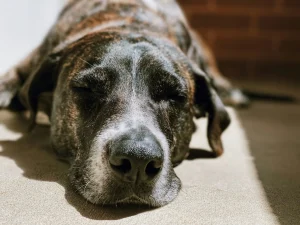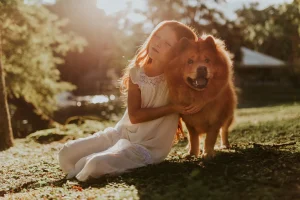The bond we share with our animal companions is profound. They bring joy to our lives, offer unwavering companionship, and become cherished members of our families. But sadly, our furry friends are not immune to the ravages of time, illness, and injury. When their quality of life diminishes, and medical interventions can no longer offer relief, euthanasia provides a compassionate and humane way to say goodbye.
Understanding the Purpose of Euthanasia in Veterinary Medicine
Euthanasia, often referred to as “putting an animal to sleep,” is the act of inducing a peaceful and painless death to end an animal’s suffering. It is a final act of kindness, a way to alleviate pain and distress when life has become unbearable.
Imagine a beloved dog, once full of life and bounding energy, now riddled with a debilitating illness. Their days are filled with pain, their nights with restlessness. They struggle to eat, to walk, to find comfort. In such situations, euthanasia offers a release from suffering, a gentle transition from life to death.
The decision to euthanise an animal is never taken lightly. It is a deeply personal choice, made with heavy hearts and tear-filled eyes. But when medical treatments have been exhausted, and an animal’s quality of life is irreparably compromised, euthanasia can be the most compassionate option.
How is Euthanasia Performed in Animals? A Step-by-Step Guide
The process of euthanasia is designed to be as peaceful and stress-free as possible. It typically involves the following steps:
- Consultation and Consent: The veterinarian will discuss the procedure with you, explaining the process and answering any questions you may have. They will also obtain your consent to proceed.
- Sedation: In some cases, a sedative is given first to help the animal relax. This can be particularly beneficial for anxious or fearful animals, ensuring they are calm and comfortable during their final moments. Imagine a gentle hand stroking your pet’s fur, a soothing voice whispering words of comfort as they drift into a peaceful slumber.
- Administration of Euthanasia Solution: The euthanasia solution, most commonly containing pentobarbital, is then administered. This is usually done intravenously, through a vein in the animal’s leg. In some cases, other routes of administration may be necessary, such as intraperitoneally (into the abdomen).
- Peaceful Passing: Once the euthanasia solution is administered, the animal quickly loses consciousness. They will fall into a deep sleep, their breathing generally will slow, and their heart will eventually stop beating. The veterinarian will carefully monitor the animal throughout the process to ensure they pass peacefully and without any distress.
The entire process is usually very quick, often taking only a few minutes. It is designed to be as gentle and humane as possible, allowing the animal to slip away peacefully in the presence of their loved ones.
The Role of Pentobarbital in Animal Euthanasia: A Closer Look
Pentobarbital, a barbiturate anaesthetic, is the most commonly used drug for animal euthanasia. It works by depressing the central nervous system, causing rapid unconsciousness and subsequent cessation of heart and brain function. Think of pentobarbital as a gentle blanket of sleep, enveloping the animal in a peaceful embrace. It quickly and effectively induces a deep state of unconsciousness, preventing any pain or distress.
Pentobarbital is a controlled substance, meaning its use is strictly regulated to prevent misuse. Only licensed veterinarians can obtain and administer pentobarbital for euthanasia, ensuring its responsible and ethical use.
Exploring Variations in Euthanasia Solutions for Animals
While pentobarbital is the primary active ingredient in most euthanasia solutions, the exact composition may vary slightly. Some solutions may contain additional drugs, such as preservatives or colourings, to enhance their stability or visibility. However, these variations do not affect the overall effectiveness or humaneness of the procedure.
The dosage of the euthanasia solution is carefully calculated based on the animal’s size and species. This ensures that the animal receives the appropriate amount of medication to induce a peaceful and painless passing.
Euthanasia in Different Animal Species: Tailoring the Approach
The fundamental principles of euthanasia remain consistent across different animal species. However, the specific drugs and procedures may be adapted to suit the unique needs of each animal.
- Companion Animals: Pentobarbital is widely used for euthanasia in companion animals, such as dogs, cats, rabbits, and small mammals. Intravenous administration is typically preferred, but other routes may be used in certain situations, such as when intravenous access is difficult to obtain.
- Livestock: Euthanasia in livestock may involve different drugs or methods, depending on the species and circumstances. For example, gunshot or captive bolt may be used in some cases, followed by exsanguination (bleeding out) to ensure death. These methods are chosen for their efficiency and practicality in a farm setting.
- Wildlife: Euthanasia in wildlife presents unique challenges, as the animals may be stressed, injured, or difficult to handle. Specialised training and expertise are often required to ensure the procedure is carried out safely and humanely, minimising any potential distress to the animal.
Ensuring Ethical and Responsible Euthanasia Practices
Euthanasia is a complex issue with ethical considerations. It is crucial that the decision to euthanise an animal is made with careful consideration, compassion, and respect for the animal’s life. Veterinarians play a vital role in guiding animal owners through this difficult process, providing information and support to help them make informed decisions.
The use of pentobarbital for euthanasia is strictly regulated to prevent misuse. It is a controlled substance that can only be obtained and administered by licensed veterinarians. This ensures that the drug is used responsibly and ethically, with the animal’s welfare as the top priority.
How we can help
The decision to euthanise a beloved animal is never easy, but at Hensol Vets, we understand the profound bond you share and are here to offer compassionate support every step of the way. Our experienced veterinarian and veterinary nurse will guide you through this difficult choice, helping you assess your animal’s quality of life and understand your options.
We provide a peaceful and comfortable environment for euthanasia in the comfort of your own home, ensuring the procedure is carried out with the utmost care and respect. If you are considering euthanasia for your pet, please don’t hesitate to contact us for guidance and support.
Remember, euthanasia is a final act of love, providing a peaceful end to suffering when medical treatments can no longer offer relief.
References
https://www.bva.co.uk/media/2981/bva_guide_to_euthanasia_2016.pdf







